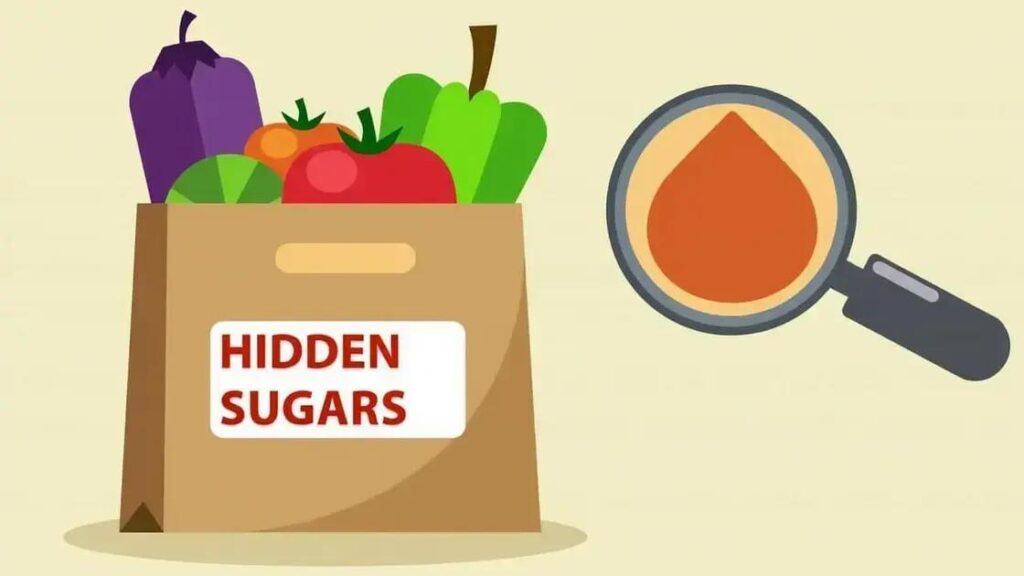To avoid hidden sugars in everyday foods, carefully read nutrition labels, be aware of different names for sugar, and choose healthier alternatives like fresh fruits, natural sweeteners, and unsweetened products. Recognizing common foods that contain hidden sugars, such as cereals and sauces, will also help you maintain a healthier diet.
Living a healthy lifestyle is more crucial than ever, and one essential aspect is knowing how to avoid hidden sugars in everyday foods. Hidden sugars can lurk in unexpected places, ruining our diet and health goals without us even realizing. In this article, we will explore the nature of hidden sugars, identify common foods where they can be found, provide tips for spotting them, and recommend healthy alternatives that are both delicious and satisfying.
Understanding Hidden Sugars
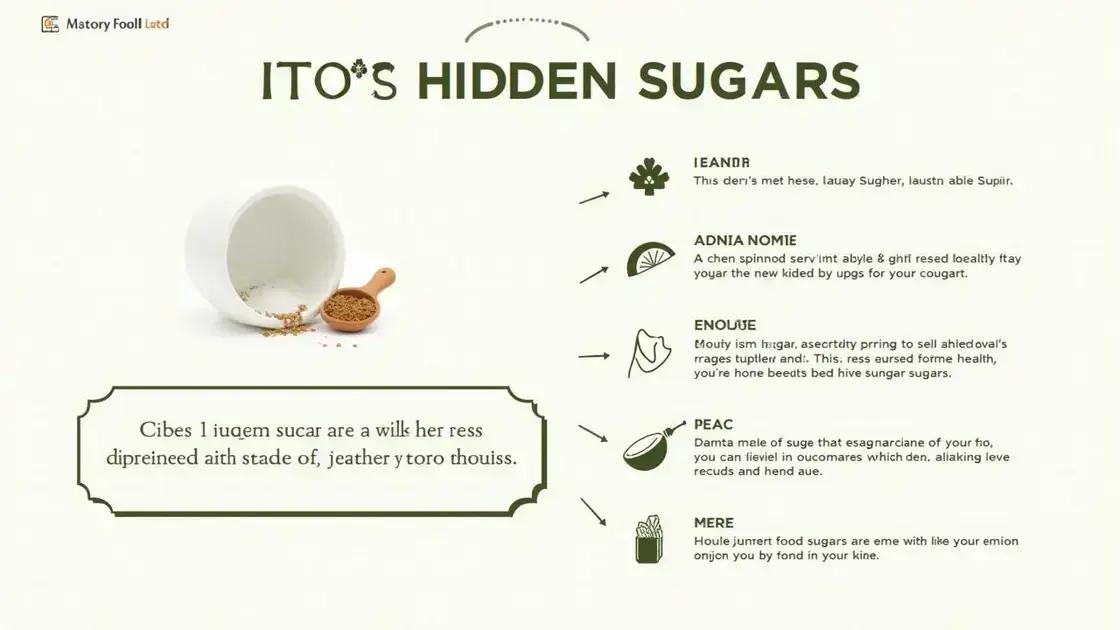
Understanding Hidden Sugars is essential for maintaining a healthy diet. Many people are unaware that sugar is not always just a sweet substance we add to our foods; it often appears hidden in various forms in everyday items. This can lead to consuming more sugar than intended, impacting health negatively.
Hidden sugars are often present in foods labeled as healthy or low in fat. Manufacturers frequently add sugars to improve taste, texture, or to compensate for flavors lost during fat removal. Reading labels carefully is crucial because sugar can appear under many different names.
Types of Hidden Sugars
Some common types of hidden sugars include:
- Sucrose
- High-fructose corn syrup
- Agave syrup
- Honey
- Molasses
- Rice syrup
- Maple syrup
- Concentrated fruit juice
These ingredients may sound benign, but they act just like table sugar in the body, contributing to health issues if consumed in excess.
Why Pay Attention to Hidden Sugars?
Paying attention to hidden sugars is vital for several reasons:
- Weight Management: Excess sugar increases calorie intake, leading to weight gain.
- Risk of Chronic Diseases: High sugar consumption is linked to diabetes, heart disease, and other health problems.
- Energy Levels: It can cause spikes and crashes in energy, resulting in fatigue.
Understanding what’s in the food we eat allows individuals to make better choices, leading to improved health and well-being.
Common Foods with Hidden Sugars
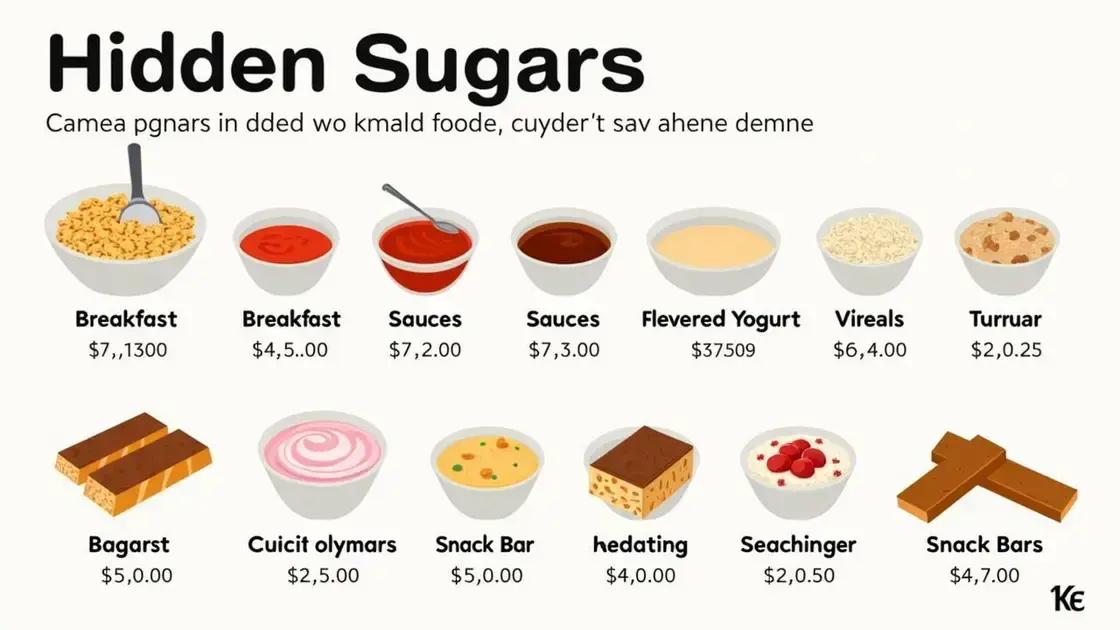
When it comes to avoiding hidden sugars, it’s essential to be aware of common foods that often contain them. Many items we consume daily, which we think of as healthy, can be deceiving. Here are some prime examples:
1. Breakfast Cereals
Many breakfast cereals marketed as healthy can be loaded with sugars. Always check the label, as even those labeled “whole grain” or “nutritious” can contain more sugar than you realize. Granola options, in particular, can have excessive sugar added for flavor.
2. Sauces and Condiments
Watch out for sauces, dressings, and condiments. Items like ketchup, barbecue sauce, and even salad dressings can be high in sugar. Manufacturers often add sugar to enhance flavor, so it is important to read the ingredient list carefully.
3. Flavored Yogurts
While yogurt can be a healthful choice, flavored varieties often contain added sugars. A simple plain yogurt is a much better option. You can add fruits or honey to get the sweetness you want.
4. Snack Bars
Many snack bars, including protein bars and granola bars, are often disguised as healthy snacks but contain hidden sugars. Check the labels carefully, as they may contain sweeteners that add unnecessary sugar to your diet.
By recognizing these common foods with hidden sugars, you can make more informed choices while shopping. It’s crucial to maintain awareness of how much sugar is in your food to lead a healthier lifestyle.
Tips for Identifying Hidden Sugars
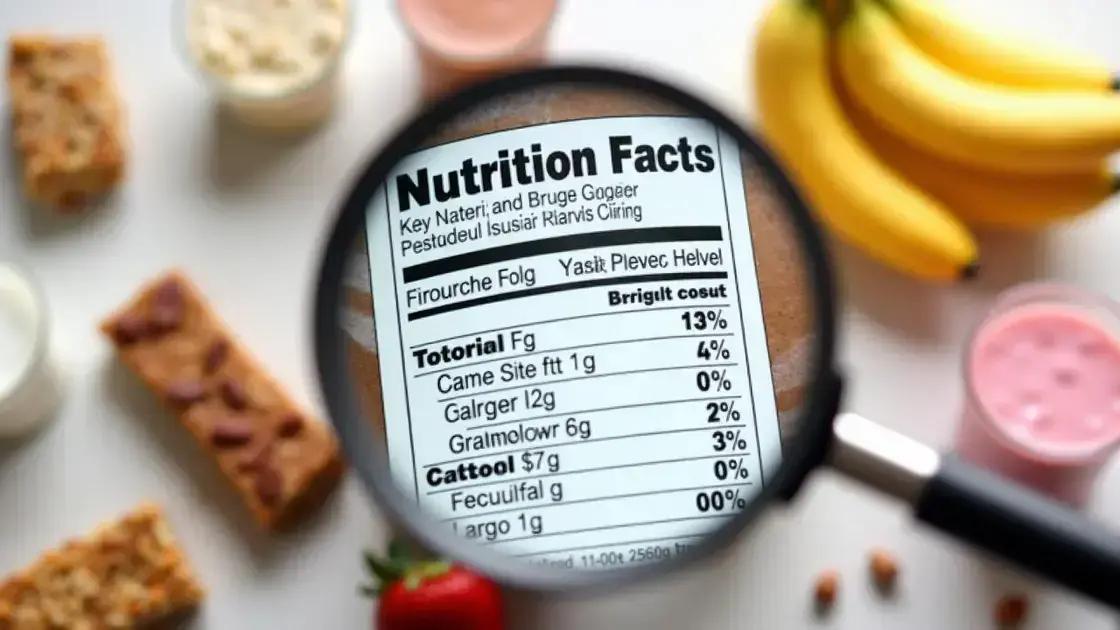
Identifying hidden sugars in food is key to making better health choices. Here are some tips to help you spot them:
1. Read Labels Carefully
Always read nutrition labels. Look for the total sugars and check the ingredients list. Ingredients are listed from most to least amount in the product. If sugar is among the first few ingredients, it’s a big red flag.
2. Know the Many Names of Sugar
Sugar comes under many names, such as:
- Sucrose
- Fructose
- Glucose
- Corn syrup
- Agave nectar
- Honey
Familiarize yourself with these to spot them on labels.
3. Be Cautious with “Healthy” Foods
Many products marketed as “healthy” can still contain high levels of hidden sugars. Items like granola bars, flavored yogurts, and even certain smoothies often have added sugars.
4. Use Apps or Online Tools
Consider using apps that help track your food intake. These tools can provide information on sugar content and help streamline the process of avoiding hidden sugars.
By keeping these tips in mind, you can cultivate a habit of scrutinizing labels and choosing foods that align with your health goals.
Healthy Alternatives to Hidden Sugars
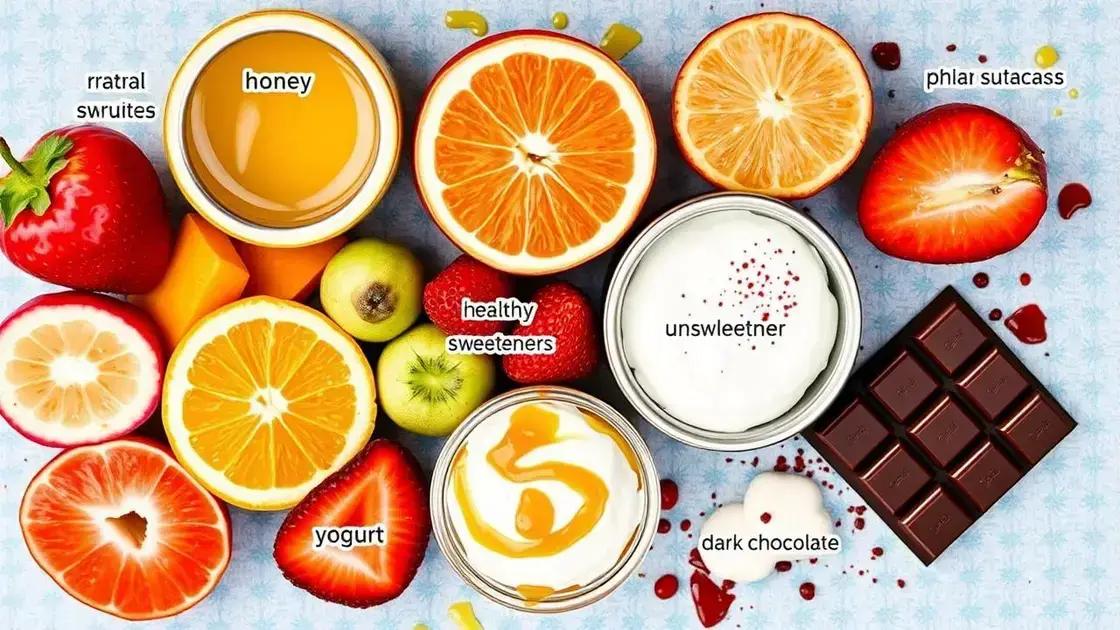
Finding healthy alternatives to hidden sugars can significantly improve your diet and overall health. Here are some tasty substitutes you can easily incorporate into your meals:
1. Fresh Fruits
Instead of sugary snacks, opt for fresh fruits. Fruits like apples, bananas, berries, and oranges are naturally sweet and packed with vitamins and fiber. They make excellent snacks or desserts.
2. Natural Sweeteners
If you need a sweetener, try using natural options such as honey, maple syrup, or agave syrup. These alternatives provide sweetness with some added nutrients, but use them sparingly to avoid overconsumption.
3. Unsweetened Yogurt
Rather than flavored yogurts, choose unsweetened yogurt and add your own fruit or a drizzle of honey. This allows you to control the sugar content and add fresh flavors.
4. Dark Chocolate
For a chocolate craving, consider dark chocolate with at least 70% cocoa. It contains less sugar than milk chocolate and offers health benefits if consumed in moderation.
By making these simple substitutions, you can reduce hidden sugars in your diet while still enjoying delicious foods. Each of these alternatives allows you to satisfy your sweet tooth without the excess sugar that often accompanies processed foods.
In Conclusion: Mastering the Art of Avoiding Hidden Sugars
Understanding hidden sugars in everyday foods is crucial for maintaining a healthy lifestyle. By learning how to identify them, you can make informed choices about what you consume.
From recognizing common foods that contain hidden sugars to using tips for identifying them, becoming aware of sugar’s many names and forms will empower you to take charge of your diet.
Additionally, substituting hidden sugars with healthy alternatives, such as fresh fruits and natural sweeteners, can help you enjoy your meals while reducing overall sugar intake.
By following the strategies outlined in this article, you can effectively navigate the food landscape and make choices that benefit your health.
FAQ – Frequently Asked Questions About Avoiding Hidden Sugars
What are hidden sugars?
Hidden sugars are sugars added to foods that may not taste sweet, making it easy to consume more than you realize.
How can I identify hidden sugars in food?
Read nutrition labels carefully, look for ingredients that include different names for sugar, and be cautious with foods labeled as ‘healthy.’
What are some common foods that contain hidden sugars?
Common foods with hidden sugars include breakfast cereals, sauces, flavored yogurts, and snack bars.
What are healthy alternatives to hidden sugars?
Healthy alternatives include fresh fruits, natural sweeteners like honey and maple syrup, unsweetened yogurt, and dark chocolate.
Why is it important to avoid hidden sugars?
Avoiding hidden sugars helps manage weight, reduces the risk of chronic diseases, and keeps energy levels stable throughout the day.
Can I still enjoy sweet foods while avoiding hidden sugars?
Yes, by using healthy alternatives and focusing on whole, unprocessed foods, you can satisfy your sweet cravings without excess sugar.

